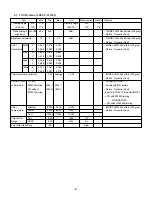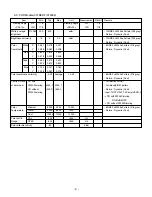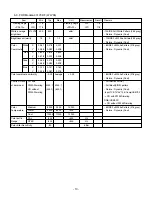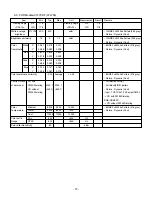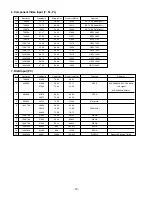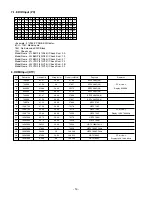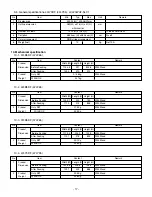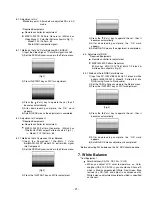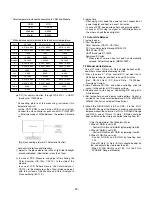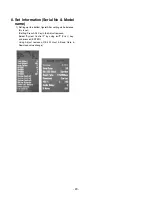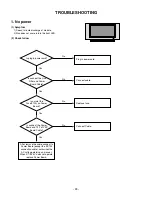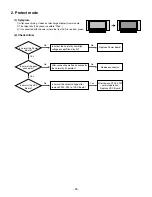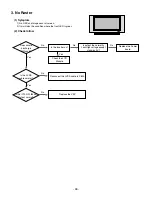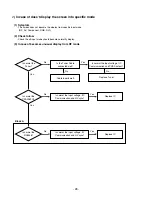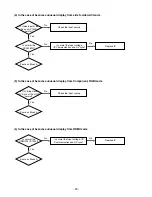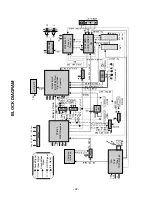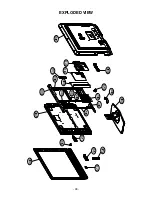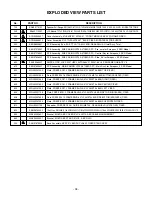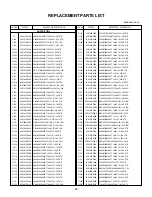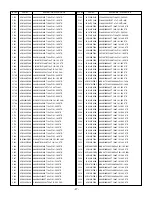
* Color temperature standards according to CSM and Module.
* White balance adjustment coordinate and color temperature.
PC (for communication through RS-232C) -> UART
Baud rate : 115200 bps
* Connecting picture of the measuring instrument (On
Automatic control )
Inside PATTERN is used when W/B is controlled.
Connect to auto controller or push control R/C IN-START
-> Enter the mode of White-Balance, the pattern will come
out.
[Fig.4] connecting picture (On Automatic Control)
* Auto-control interface and directions
1) Adjust in the place where the influx of light like floodlight
around is blocked. (illumination is less than 10ux).
2) In case of PDP: Measure and adjust after sticking the
Color Analyzer (CA-100+, CA210 ) to the side of the
module.
In case of LCD: Adhere closely the Color Analyzer (
CA210 ) to the module less than 10cm distance, keep it
with the surface of the Module and Color Analyzer’s
Prove vertically.(80~100°).
3) Aging time
- After aging start, keep the power on (no suspension of
power supply) and heat-run over 15 minutes.
- In case of PDP, keep white pattern using inside pattern.
- In case of LCD, using ‘no signal’ or ‘full white pattern’ or
the others, check the back light on.
7.1 Auto white Balance
1) setup is done.
2) Test Equipment
Color Analyzer ( CA210, CA-100+)
PC (for communication through RS-232C)
RS-232 Host Ë PC
UART Baud rate Ë 115200
Download Ë Cortez
*** When press Power-on key, this point is automatically
setuped. Pattern Generator (MSPG-925F)
7.2 Manual white Balance
* One of R Gain / G Gain / B Gain should be kept on 80,
and others are controlled lowering from 80
1) Press "power on°" of the control R/C, set heat run to
white by pressing
, and heat run over 15 minutes
(Set : RS-233 Host : PC, Baud Rate : 115200bps,
Download: Cortez).
2) Zero Calibrate CA-100+, and when controlling, stick the
sensor to the center of LCD module surface.
3) Double click In-start key on Controlling R/C and get in
‘white balance’.
4) Set test-pattern on and display inside pattern. Control is
carried out on three color temperature, COOL, MEDIUM,
WARM. (Control is carried out three times,)
5) When the R/G/B GAIN is 80 on OSD, it is the FULL
DYNAMIC Range of the Module. In order to control white
balance without the saturation of FULL DYNAMIC Range
and DATA, one of R Gain / G Gain / B Gain should be
kept on 80, and other two is controlled lowering from 80.
* Color Temperature: Cool, Medium, Warm
1. When R GAIN is set to 80
- Control G GAIN and B GAIN by lowering from 80.
2. When B GAIN is set to 80
- Control R GAIN and G GAIN by lowering from 80.
3. When G GAIN is set to 80
- Control R GAIN and B GAIN by lowering from
192.
One of R Gain / G Gain / B Gain should be kept on
80, and adjust other two lower than 80.
(When R/G/B GAIN are all 80, it is the FULL
DYNAMIC Range of Module)
Cool
CS-1000
CA-210 (CH 9)
CA-100+ (CH 9)
X
0.276
0.002
0.276
0.002
0.276
0.002
Y
0.283
0.002
0.283
0.002
0.283
0.002
Temp
11000
1000
11000
uv
0.000
0.000
0.000
Medium
CS-1000
CS-1000
CS-1000
X
0.285
0.002
0.285
0.002
0.285
0.002
Y
0.293
0.002
0.293
0.002
0.293
0.002
Temp
9300
9300
9300
uv
0.000
0.000
0.000
Warm
CS-1000
CS-1000
CS-1000
X
0.313
0.002
0.313
0.002
0.313
0.002
Y
0.329
0.002
0.329
0.002
0.329
0.002
Temp
6500
6500
6500
Temp
0.003
0.003
0.003
CSM
LCD
Cool
11,000k
Medium
9,300k
Warm
6,500k
- 22 -
Summary of Contents for 37LF65
Page 51: ... 51 MAIN TOP ...
Page 52: ... 52 MAIN TOP ...
Page 53: ... 53 AMP TOP AMP BOTTOM CONTROL KEY TOP CONTROL KEY BOTTOM ...

